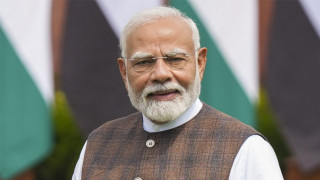
X
Gyanvapi Case: In the wake of the Archaeological Survey of India (ASI) report disclosing the presence of a substantial Hindu temple predating the construction of the Gyanvapi mosque, security has been significantly bolstered outside the mosque premises. The revelations have added a layer of sensitivity to the Friday prayers (Jumma) at the disputed site, prompting authorities to implement stringent security measures to avert any potential untoward incidents.
Considering the heightened emotions surrounding the ASI findings, the media was intentionally kept at a distance from the Gyanvapi mosque. This calculated decision aimed to maintain a calm atmosphere conducive to the peaceful observance of Friday prayers. Authorities were vigilant about preventing the spread of misinformation and curbing unnecessary panic that might arise from sensationalized reporting.
Acknowledging the potential for conflicts in the area due to the sensitive nature of the ASI report, conscious efforts were made to manage and mitigate any tensions. The local administration worked proactively to foster an environment of understanding and tolerance, ensuring that the community's sentiments were respected.
The ASI's comprehensive report on the Gyanvapi mosque complex uncovered historical layers, suggesting a complex evolution of the site. The report indicated that a pre-existing structure, potentially a Hindu temple, had been destroyed in the 17th century. Crucially, parts of this structure were modified and reused in the construction of the existing mosque.
Scientific studies conducted by the ASI, including surveys, examinations of architectural remains, and analysis of inscriptions, art, and sculptures, played a pivotal role in forming these conclusions. The Arabic-Persian inscription found within the mosque mentioned its construction during the 20th regnal year of Aurangzeb (1676-77 CE). This aligned with the ASI's assertion that the pre-existing structure faced destruction during Aurangzeb's reign, with elements repurposed in the mosque.
The ASI survey was initiated following claims by Hindu petitioners asserting that the 17th-century Gyanvapi mosque had been constructed atop a pre-existing Hindu temple. The district court ordered the survey to ascertain the historical veracity of these claims.
As the revelations continue to reverberate, the Gyanvapi mosque stands as a testament to the rich historical tapestry of the region, embodying the coexistence of diverse cultural and religious narratives.













Copyright © 2025 Top Indian News
